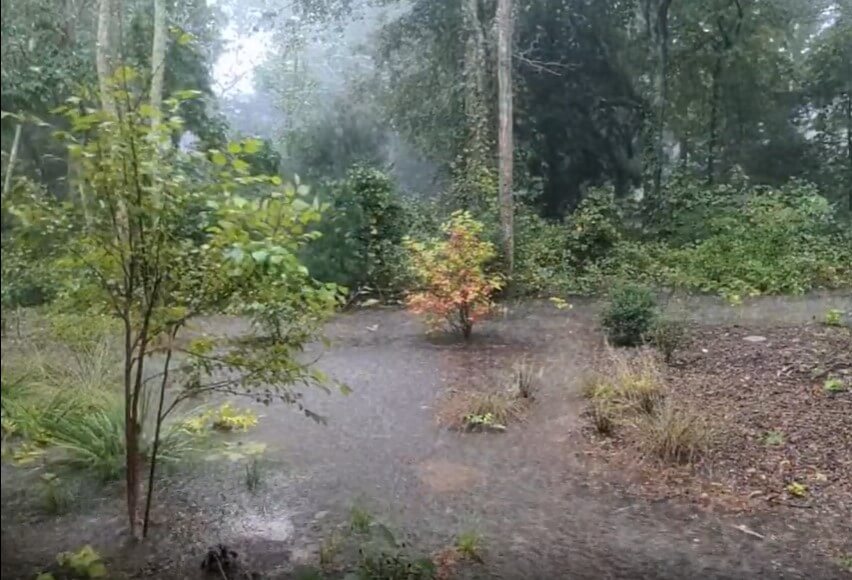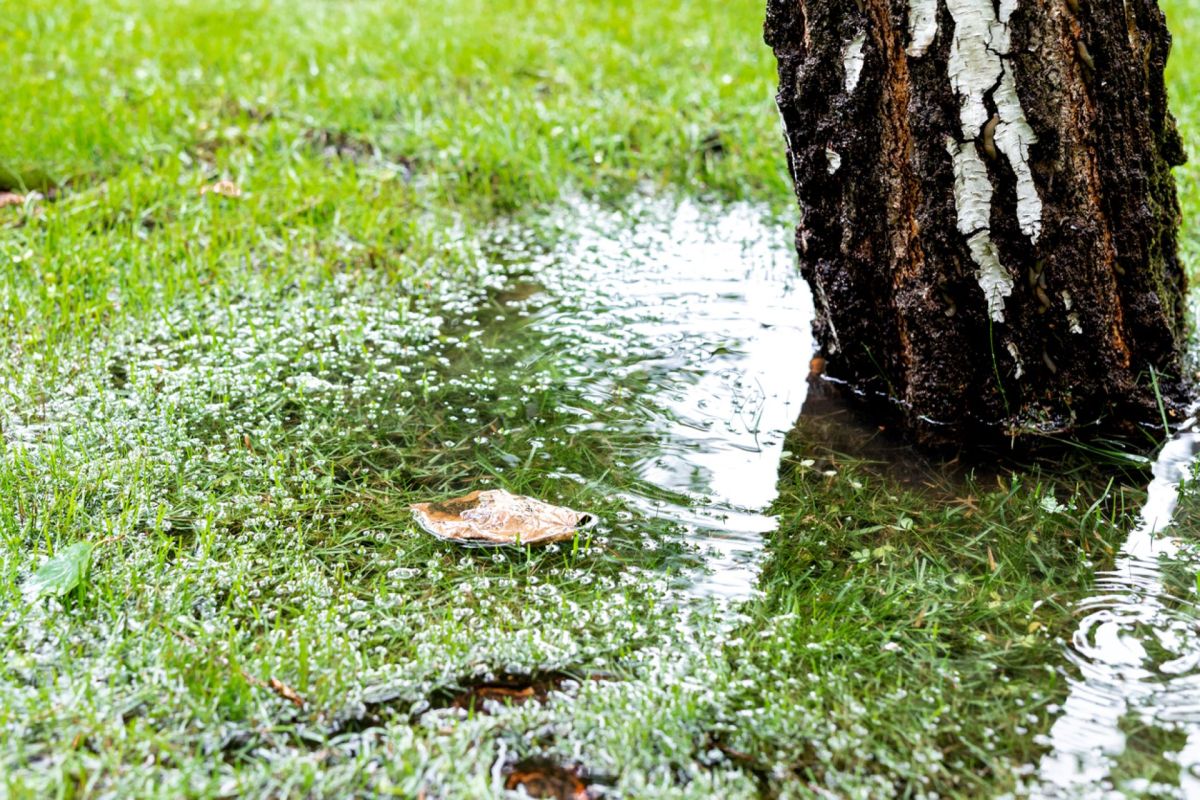One landscaper on Reddit posted a video last year to show fellow Redditors the exact purpose of a rain garden.
Rain gardens are popular in areas with heavy rainfall. Unchecked, rain can flood nonabsorbent paved areas, erode the soil it flows over, and wash dirt, fertilizer, and pesticide into nearby water sources.
A rain garden is designed to trap the water and absorb it safely into the soil. It uses native plants with deep roots that help keep the ground loose so the water can soak in. Not only does it prevent the problems caused by runoff flowing over compacted soil, but it also means the plants get extra water so they can thrive, all without the owner spending a dime. Meanwhile, the excess water that soaks into the soil filters down into local aquifers, replenishing the water supply with clean, safe rainwater.
"Rain garden working as intended. If this were [a] lawn all that stormwater would be running right down the road," they wrote in the post.

That's why the original poster was so proud of this incredible example of the concept. "I planted this rain garden in the spring of this year for someone building a new house," they said in a comment. "The homeowner wanted to go full no-lawn so we created a small patch of no-mow grass, fine fescues, and dwarf white clover, this rain garden, and other pollinator gardens instead of lawn elsewhere."
Their video was a 13-second clip of the rain garden in action. Between young shrubs and trees on a bed of mulch, water can be seen pooling on the ground during a heavy rainfall. The water is clearly being held in place in a deliberately crafted, shallow pond that feeds the surrounding plants. "Even with all that water in the video it was fully absorbed in a few hours," they said.
Can't afford solar panels? Here's how to get them without paying for purchase or installation Palmetto's revolutionary LightReach program gives you all the benefits of solar power without the upfront costs. LightReach lets you lease solar panels with no money down, making it easier than ever to lock in energy savings. Palmetto assumes all risk and responsibility for the panels you lease, which means you'll get reliable performance without unforeseen costs. To get started, just answer a few basic questions about your home and learn how much you can save. Learn more → |
To achieve this effect, the original poster said they chose a variety of water-loving plants. "River birch, black chokeberry, inkberry, Carolina allspice, and American cranberry bush are the shrubs," they explained. "The herb layer (which is mostly underwater) is a mix of irises, sedges, lobelias, anemones, and other flood-tolerant wildflowers."
According to the original poster, the garden would only get better in future years. "It still has a ways to go, but I'm really pleased with how much it's knit together so far," they concluded.
"That birch is in heaven right now," said one commenter.
"Thank you for replenishing your local aquifer!" said another user.
TCD Picks » Quince Spotlight

Join our free newsletter for easy tips to save more, waste less, and help yourself while helping the planet.












